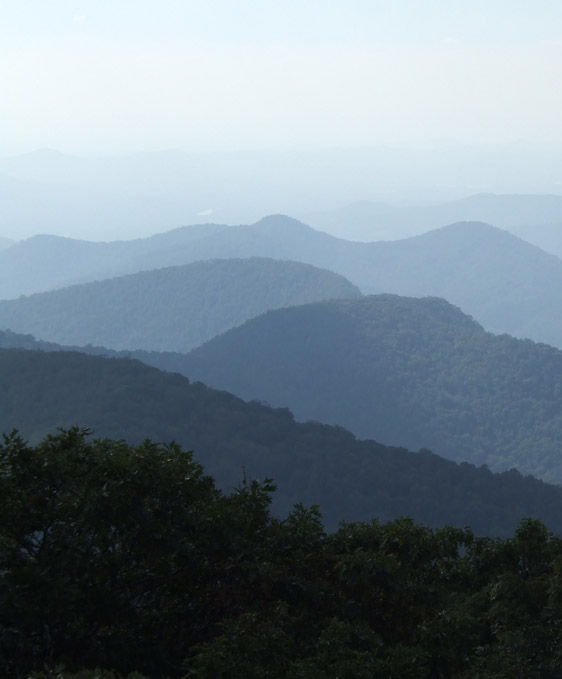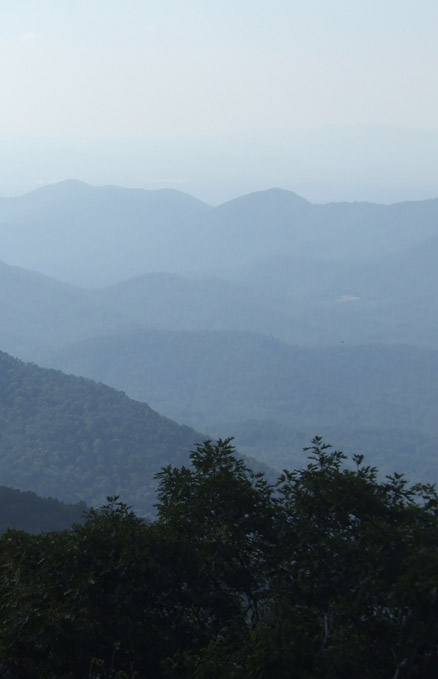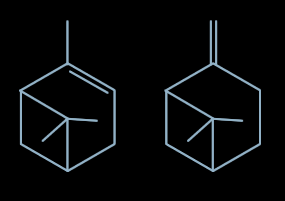Haze and airlight produce the blues. The haze is special to the Blue Ridge Mountains and many other heavily forested areas.
Haze is the result of sunlight scattering by small airborne particles and aerosol. When the particles are smaller than the wavelength of light (Rayleigh scatterers) they scatter blue much more strongly than red and the haze appears bluish. Larger particles give a whiter haze.
What produces the Blue Ridge aerosol? Trees are copious emitters of volatile and reactive hydrocarbons such as monoterpines like α- and β-pinene. These are largely responsible for the characteristic smell of pine.
The terpenes are gaseous and invisible but in sunlight they undergo photochemical reactions with atmospheric ozone and sulphur acids to produce nano-sized particles. These scatter light to give the blue haze. It is a form of photochemical smog that in city air via a similar series of chemical reactions can be undesirable.
Airlight occurs anywhere and is responsible for mountains and distant scenes appearing progressively bluish. It is strongest when the sun is high. Air molecules preferentially scatter short wavelength (blue) light producing in effect a veil over distant objects. This is the same Rayleigh scattering that produces the blue sky.
|





